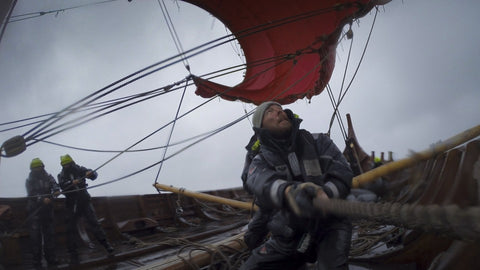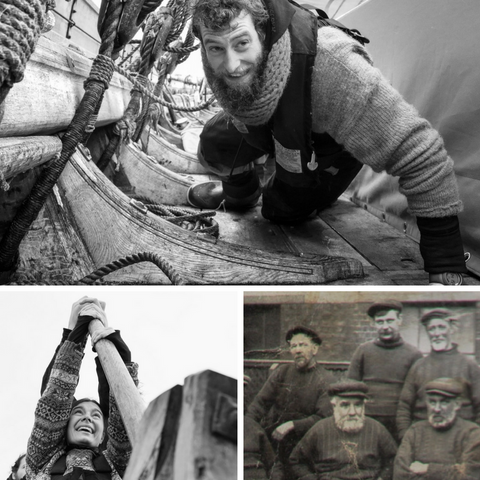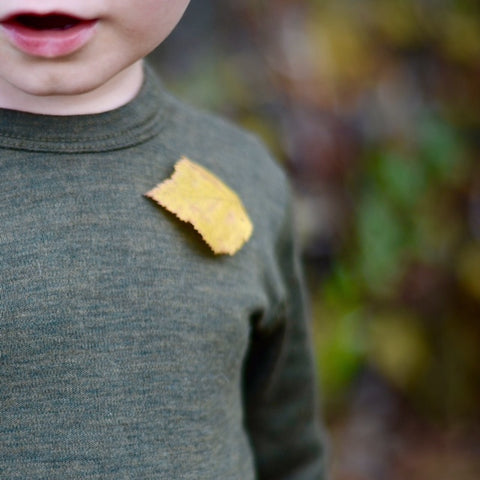Hi!
It’s been a busy few months while I’ve been building up our stock of winter product, but as today is Columbus day, it got me thinking about a cool experience I had recently that I’d love to share with you.
In September I went with my family to watch the Draken Harald Harfague, a scaled replica of a Viking ship, make its passage into New York Harbor. The ship set sail from Norway 5 months earlier. The crew was closely reenacting an expedition undertaken by Leif Erikson who was the first explorer to sail to North America, around 400 years before Christopher Columbus did. The voyage of the Draken followed a route through rivers and seas in Iceland, Greenland, across the North Atlantic to Newfoundland, The Great Lakes and New York. And just like the Vikings, these modern day sailors were rowing that ship through storms and encountering icebergs and scorching sun, phew!
It was such a sight watching them arrive into New York Harbor in this beautiful boat. A crowd had gathered to cheer them on and the crew, some dressed in full Viking costume, sang old Viking songs as they came into the dock. There were tears, mine included, for what these “oarsome” (sorry, had to!) athletes, who despite the exposure to the elements and physical exertion of the last months, had achieved. Later I went home and looked online at the photos of the crew on their journey and guess what they were wearing on their voyage? Yep, wool base layers!
Now I’m not saying the wool base layers are some kind of superhero costume for sailors, but it did make me think of the familiar black and white images of seafarers that we’ve all seen. You know the kind; grizzly looking, weather beaten men with beards, all bulked up in their chunky woolen hats and long johns and sweaters, most often a pipe hanging from their mouth. Here’s some pictures if you’ve forgotten.
These poor sailors only had scratchy, bulky yarns back then, but they put up with wearing it for most of their waking hours because the benefits of wearing wool at sea far outweighed any nuisance of it. See, what the sailors knew is that not only was the wool protecting against UV rays but it absorbs water, and wicks moisture off your skin. It also maintains a stable temperature so if it does get wet, you won’t get wet or cold wearing it.
Over last century there have been many attempts to develop synthetic fabrics and cottons that are thinner and softer, and perform as well as wool does. But in the end wool is a fantastic and natural material that just needed to be made softer and more wearable! Thankfully we could bring this old material into modern times and our mills now produce Fine Merino Wool that is as soft as any cotton you’ll find. The best part is that one layer of fine Merino wool can replace many layers of cotton and synthetic fabrics (that means less bulk, fewer layers to put on and take off wriggly kids, and also less laundry? Yes please!)
The other thing I love about the magic of wool is that it also has a repellent quality to it so a light rain shower, a small spill, giant waves at sea, or the more frequent ‘spit up’, will kind of roll off the fabric and can be wiped up pretty easily. The other bonus of wool being a repellent is that it acts as an antibacterial and resists odor so you don’t have to wash it after every wear.
Did I mention less laundry?
As we head back into another New York winter I have a whole stock of new, super soft fine merino wool base layers and leggings that are super soft and just waiting to make kids, mine included, toasty and keep them dry so they can spend lots of hours playing outside in the playgrounds, and parks, the woods. And it doesn’t hurt that they’ll look cute while they’re doing it!
Wool base layers are so common in Norway that you can pick them up while you are standing in line at a supermarket checkout and now you know why we love them. So, I guess thank you, sailors and seafarers, for passing down your wisdom on how to dress for extreme, wet climates!
Becca
PS It’s important to me to wrap my own little lambs up in wool that has come from sheep that
have been treated humanely and are farmed with minimal impact on the earth, but not all wool
comes from a happy fleece. More on that next week…


